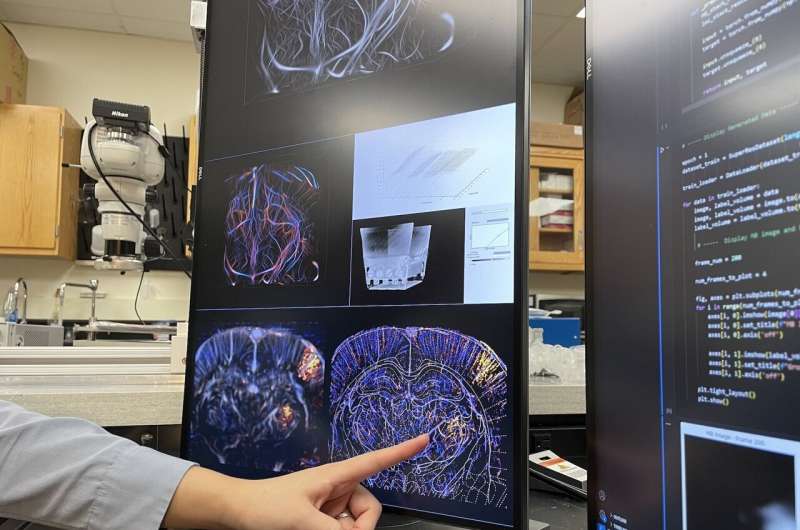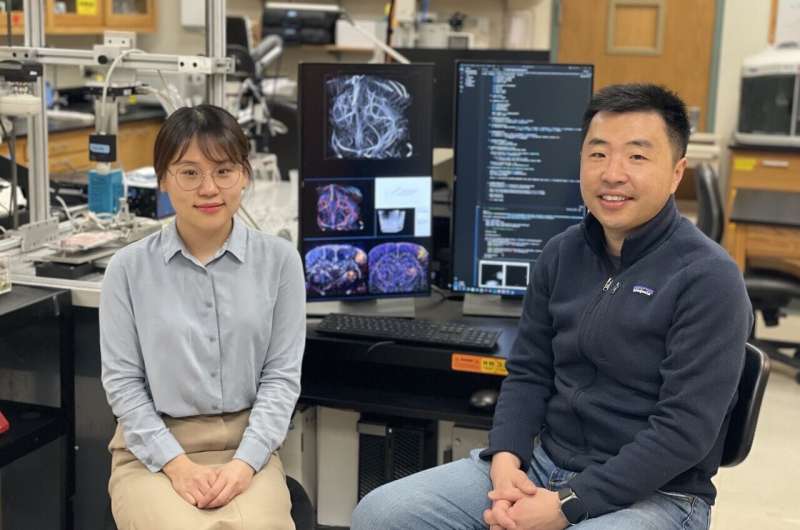This article has been reviewed according to Science X's editorial process and policies. Editors have highlighted the following attributes while ensuring the content's credibility:
fact-checked
peer-reviewed publication
trusted source
proofread
Advancing high-resolution ultrasound imaging with deep learning

Researchers at the Beckman Institute for Advanced Science and Technology have developed a new technique to make ultrasound localization microscopy, an emerging diagnostic tool used for high-resolution microvascular imaging, more practical for clinical settings. Their method uses deep learning to advance in the post-processing pipeline of ULM.
Their technique, called LOcalization with Context Awareness Ultrasound Localization microscopy, or LOCA-ULM, appears in the journal Nature Communications.
"I'm really excited about making ULM faster and better so that more people will be able to use this technology. I think deep learning-based computational imaging tools will continue to play a major role in pushing the spatial and temporal resolution limits of ULM," said first author YiRang Shin, a graduate student in the Department of Electrical and Computer Engineering at the University of Illinois Urbana-Champaign.
Ultrasound localization microscopy works by injecting microbubbles into blood vessels, where they act as contrast agents. Microbubbles are FDA-approved for clinical use. Ultrasound waves can penetrate deep tissues in the body to pinpoint the location of these microbubbles—each only several microns in size—as they travel through the bloodstream. Researchers use microbubbles to track blood flow speed and create spatial images of blood vessels at the microscale.
The current imaging speed of ULM has limited its practical application as a diagnostic tool in the medical field and a research tool in basic science. Increasing imaging speed requires a higher concentration of microbubbles in the bloodstream, which makes the post-processing much more difficult, Shin said.

The researchers' new method demonstrates higher imaging performance and processing speed, increased sensitivity for functional ULM and overall superior in vivo imaging. It also demonstrates improved computational and microbubble localization performance and is adaptable to different microbubble concentrations.
"It really beats conventional microbubble localization methods; this is the way to go," said Pengfei Song, a Beckman researcher and the Y.T. Lo Faculty Fellow and assistant professor of electrical and computer engineering at Illinois.
To make microbubble localization faster, more accurate and more efficient, the researchers developed a simulation model based on a generative adversarial network called GAN. This simulation creates realistic microbubble signals to train the deep context-aware neural network DECODE.
Pengfei Song is also an assistant professor of bioengineering and biomedical and translational sciences and an affiliate of the Carl R. Woese Institute for Genomic Biology at Illinois.
Additional co-authors include Matthew R. Lowerison, Yike Wang, Xi Chen, Qi You, Zhijie Dong and Mark A. Anastasio.
More information: YiRang Shin et al, Context-aware deep learning enables high-efficacy localization of high concentration microbubbles for super-resolution ultrasound localization microscopy, Nature Communications (2024). DOI: 10.1038/s41467-024-47154-2





















